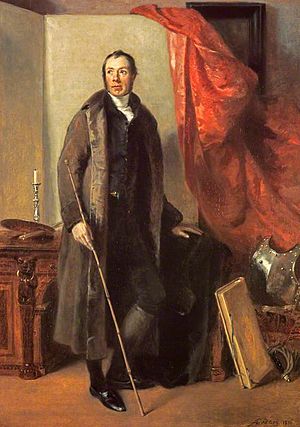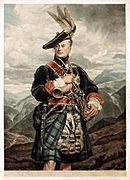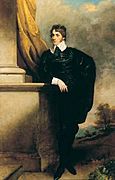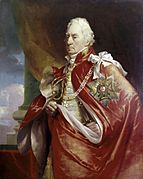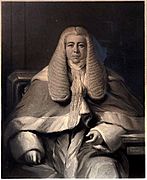George Sanders (painter) facts for kids
George Sanders (1774 – March 26, 1846) was a talented Scottish artist. He was famous for painting portraits of important people. His work captured the look and feel of many well-known figures of his time.
Contents
Biography of George Sanders
George Sanders was born in 1774 in a town called Kinghorn in Fife, Scotland. He grew up and studied in Edinburgh. As a young man, he learned how to paint coaches from a painter named Smeaton. This was like learning how to paint large, detailed designs on carriages.
Early Career and Art Styles
After his training, Sanders became a miniature-painter. This meant he painted very small, detailed portraits, often on ivory. He also worked as a drawing teacher and designed pictures for books. One of his early big projects was painting a huge panorama of Edinburgh. A panorama is a wide, sweeping view, like a very long painting that makes you feel like you are looking all around. His panorama showed Edinburgh from a ship in Leith Roads.
Around 1807, Sanders moved to London. He continued painting miniatures for a few years. Then, he started painting life-sized portraits using oil paints. Even though he was not always seen as the most skilled artist, he became very popular for a while. Many wealthy people wanted him to paint their portraits. He even earned a lot of money for some of his paintings, like the one of Lord Londonderry.
Famous Portraits and Engravings
Sanders often painted men in special, old-fashioned clothes. Some of his well-known portraits include those of the Dukes of Buckingham, Devonshire, and Rutland. He also painted Lord Dover, Lord Falmouth, and Jane Spencer-Churchill, Duchess of Marlborough. These paintings were later made into prints by famous engravers like J. Burnet and C. Turner.
He painted several portraits of the famous poet Lord Byron. One portrait from 1807 was later used as a front cover for Byron's books. Another famous painting showed the poet standing by his boat. Sanders also painted a small miniature of Byron for his sister, Mrs. Leigh.
Later Life and Legacy
Sanders only showed his paintings at the Royal Academy once, in 1834. He displayed five portraits there. He often traveled to Europe and made watercolor copies of famous paintings by Dutch and Flemish artists. Twenty-three of these copies are now kept in the National Gallery of Scotland.
George Sanders passed away on March 26, 1846, in London. He helped train his niece, Christina Robertson, who also became a painter. She became a very important artist at the Russian court.
Sometimes, George Sanders is confused with another miniature painter named George Lethbridge Saunders (1807–1863).
Gallery


